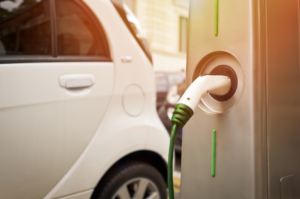Electric vehicles (EVs) appear to have the upper hand over Hydrogen vehicles at present, though this could be explained by the technology and infrastructure not being as developed for Hydrogen Fuel Cell Vehicles (HFCVs). There is still every chance that Hydrogen could challenge Electric as the future of clean transport.
How do they work?
Electric vehicles are powered by a lithium-ion battery which then powers the motor of the vehicle, these batteries are then recharged by plugging into the electricity grid. Hydrogen vehicles also contain an electric motor fuelled by Hydrogen fuel cells which then react with oxygen to produce electricity and water vapour. These vehicles are refuelled in a similar way to petrol and diesel vehicles at Hydrogen specific service stations.
Pros and cons?
The infrastructure for Electric vehicles is far more advanced than Hydrogen with grants being offered by the UK towards the purchase and installation of domestic charging points. However, the infrastructure for Hydrogen vehicles is thought to be relatively straightforward to scale up with the right investment and support.
Electric is also generally cheaper to purchase with the cost of recharging less during off-peak grid times making them a good long-term investment. Although the lengthy charging times and shorter ranges of the Electric vehicles make the higher cost of Hydrogen refuelling, not dissimilar to current fuel prices, easier to accept.
Both vehicle options produce no emissions from the exhausts, but Co2 is released during the manufacturing processes, meaning that neither option is a completely zero emission product.

It seems that both Electric vehicles and Hydrogen vehicles need further research and development. Electric needs a solution for efficient recycling of batteries, quicker charging times, and increased ranges. While Hydrogen needs improved infrastructure and reduced costs for the extraction of Hydrogen for refuelling. Both options could be major solutions to ‘green’ transport and help meet the ambitious target of ending sales of non-zero emission cars and vans in 2035.




